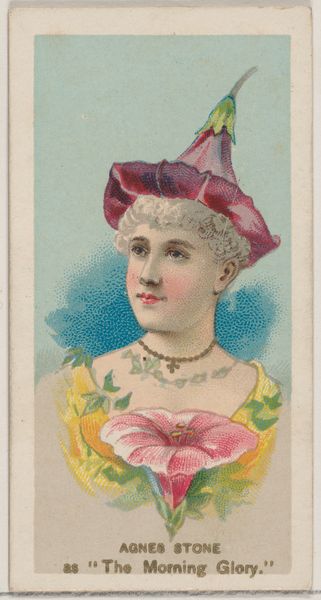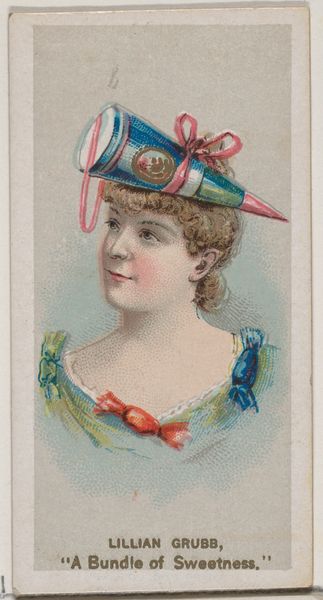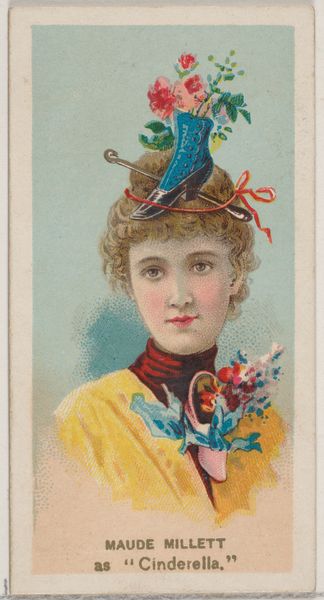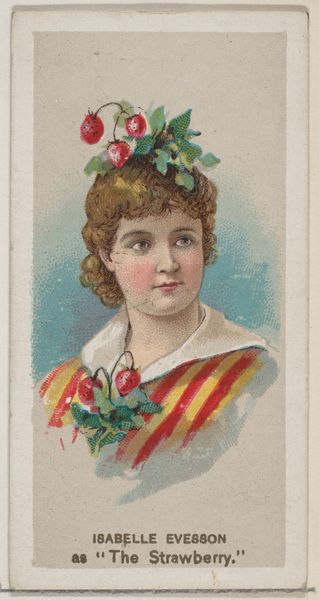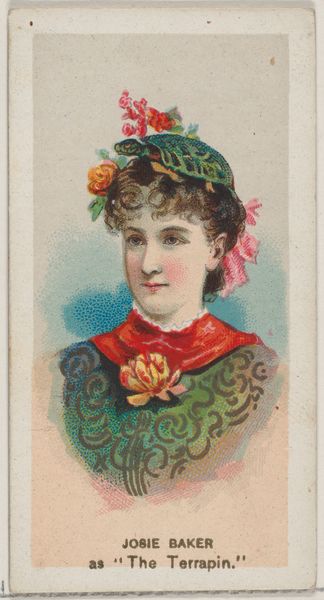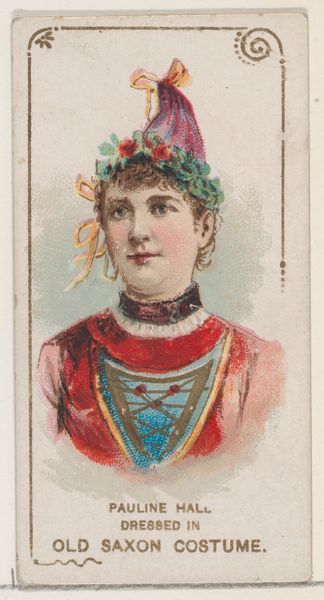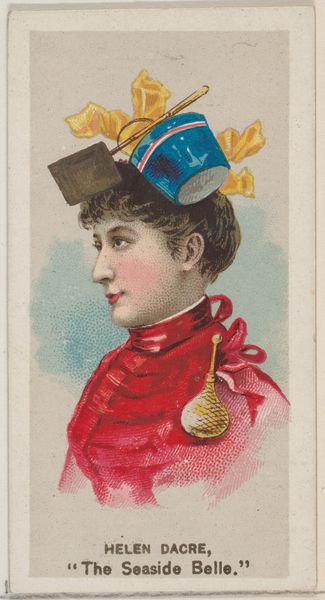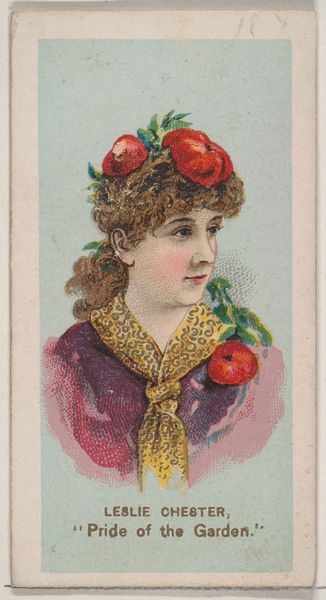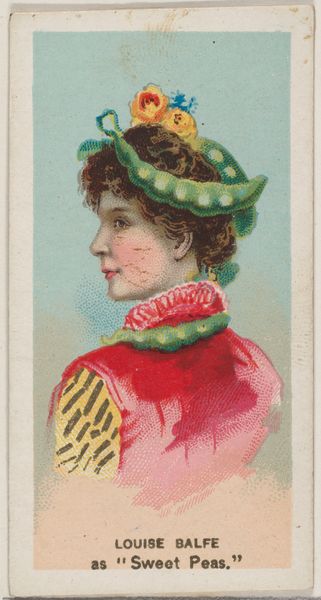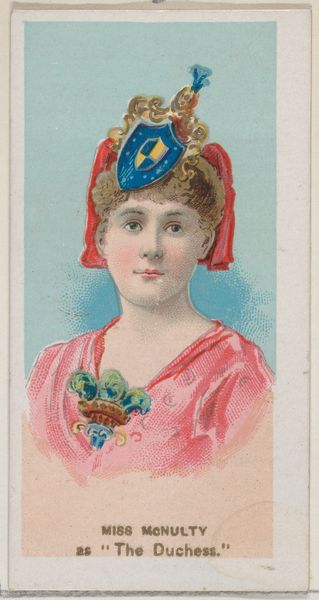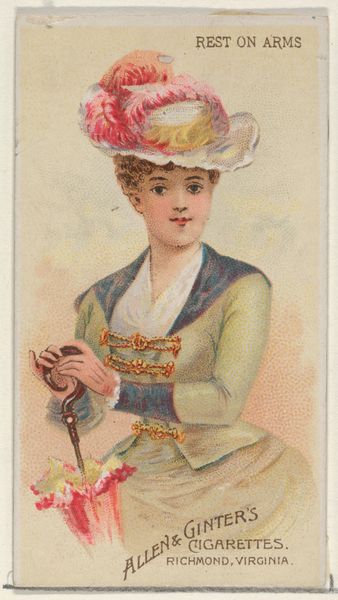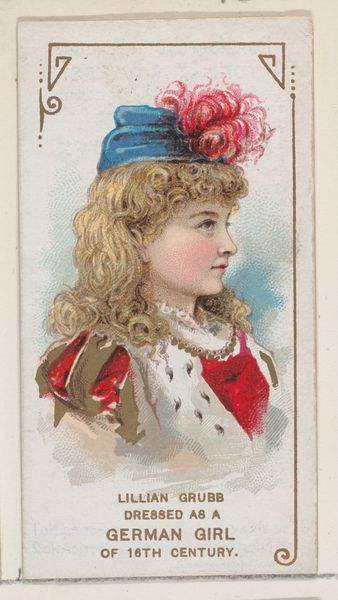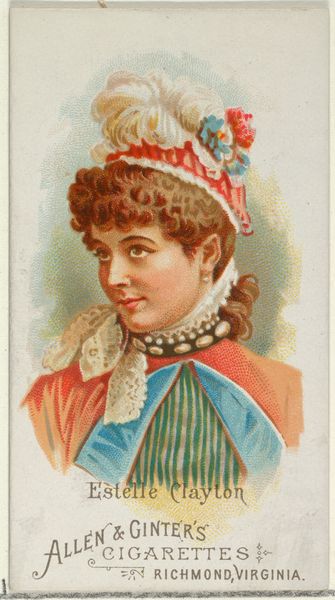
Josie Hall as "Light and Shade," from the series Fancy Dress Ball Costumes (N73) for Duke brand cigarettes 1889
0:00
0:00
drawing, coloured-pencil, print
#
portrait
#
drawing
#
coloured-pencil
# print
#
oil painting
#
coloured pencil
#
genre-painting
Dimensions: Sheet: 2 3/4 x 1 1/2 in. (7 x 3.8 cm)
Copyright: Public Domain
Curator: This intriguing card, now displayed in the Met, features Josie Hall costumed as "Light and Shade." It was part of the Fancy Dress Ball Costumes series made for Duke brand cigarettes around 1889. Quite an era of marketing and persona! What’s your initial reaction? Editor: The first thing that strikes me is the ingenuity of the costume! The candle, the shade, the contrasting colors – but also the bizarre connection to a tobacco brand! You know, the materials that went into this—the paper, the coloured-pencils—were ultimately a vehicle to market tobacco consumption. Curator: Absolutely, and there's the intersection of advertising, art, and celebrity. Josie Hall was a known personality, and dressing her as an embodiment of light and shade raises questions about female representation and performance in the 19th century. What does it mean to *become* a symbol? Editor: Indeed. Plus, consider the printing process. The choices regarding colors, the application of pigment... all crucial aspects of creating desirability. Also, given the scale, its probably from some sort of printing. We have to talk about labour in this era. This card meant jobs at factories, some safe and others...dangerous! Curator: Good point. It draws us into questions around labour conditions and distribution channels, very far from fancy balls. The card isn’t just an object; it encapsulates class divisions and the commodification of identity in late 19th-century America. Editor: Right. And if we look at it even broader, consider its function! Not just decoration, not just an art object, but a token of capital exchanging hands, from W. Duke to a consumer. Consumption literally being promoted. Curator: So, we've started with surface appearances—the costume, the artistic medium—and arrived at far more profound considerations about social structures, labor dynamics, and performative identities. Quite an excavation. Editor: Exactly! What seemed a simple decorative object leads to these vital historical narratives about capital, labour, representation and even harm to the user. Material things, right here in front of our eyes.
Comments
No comments
Be the first to comment and join the conversation on the ultimate creative platform.
